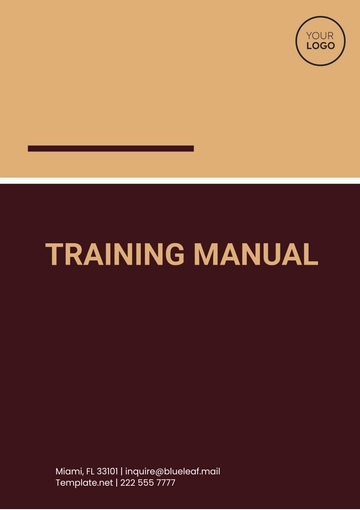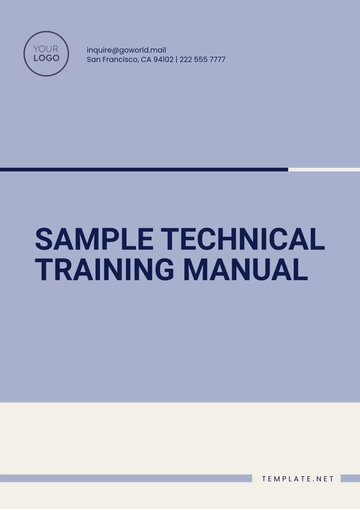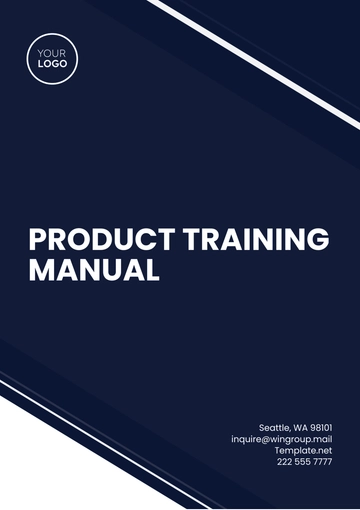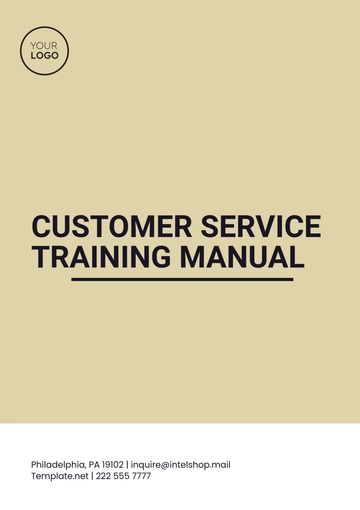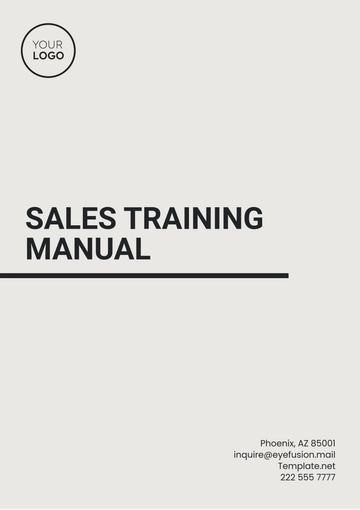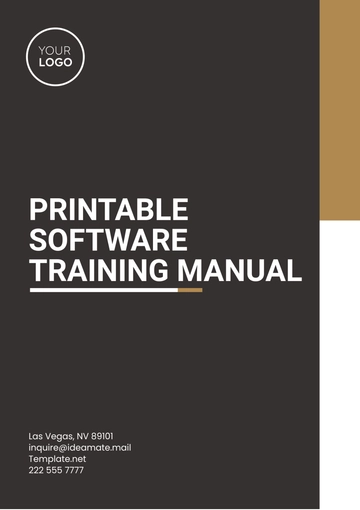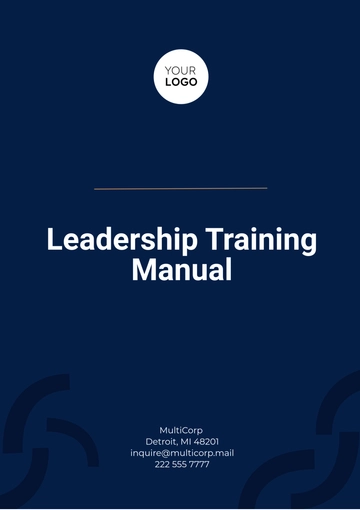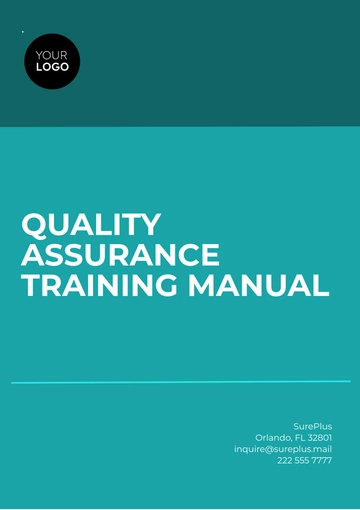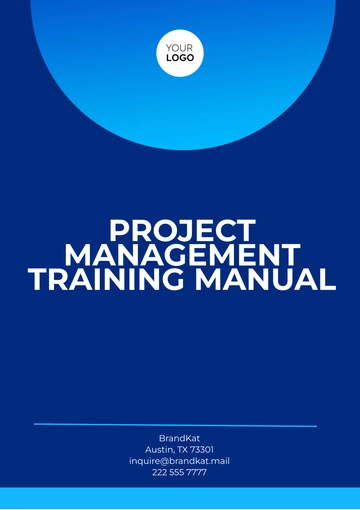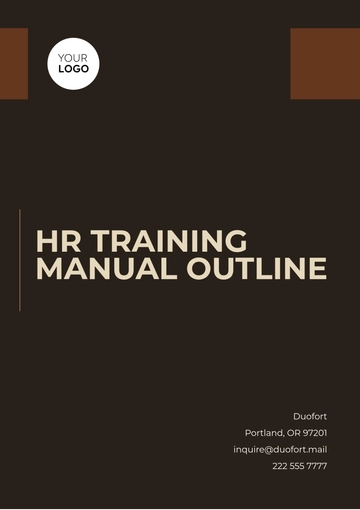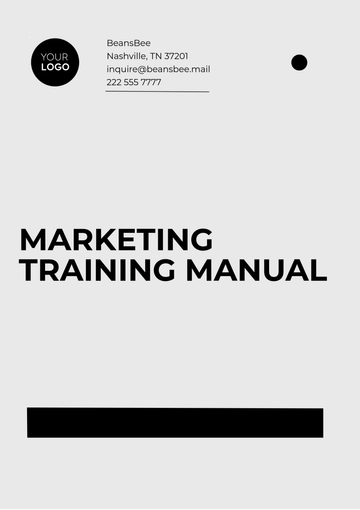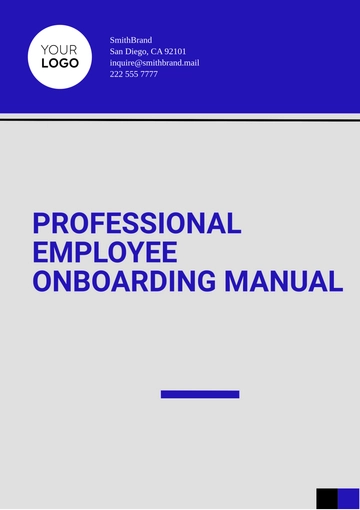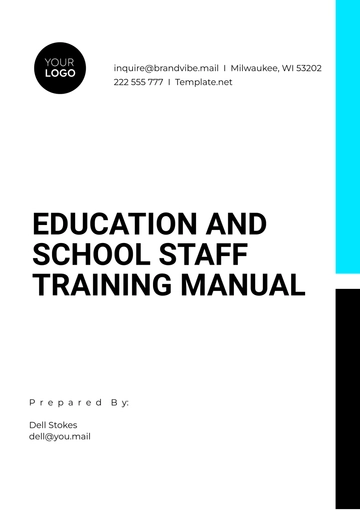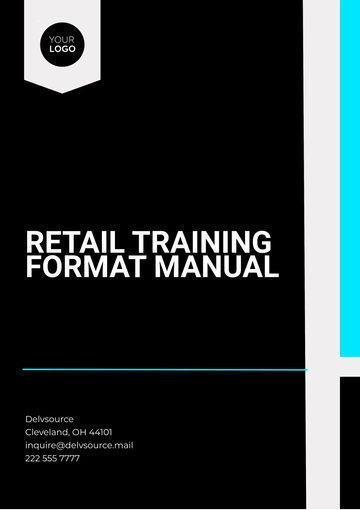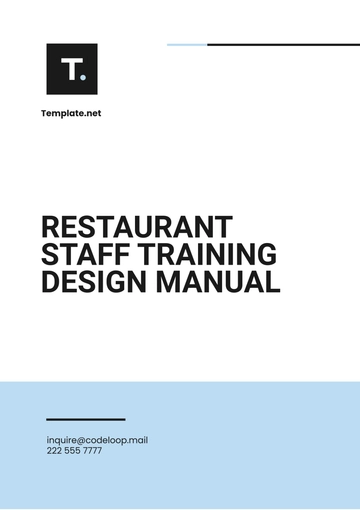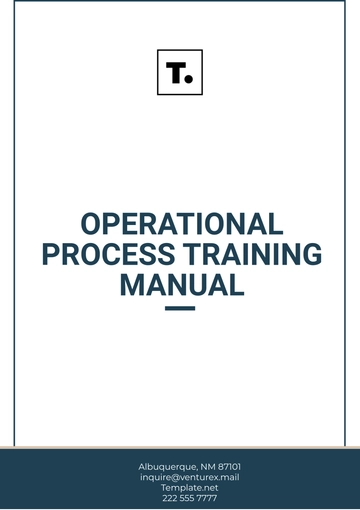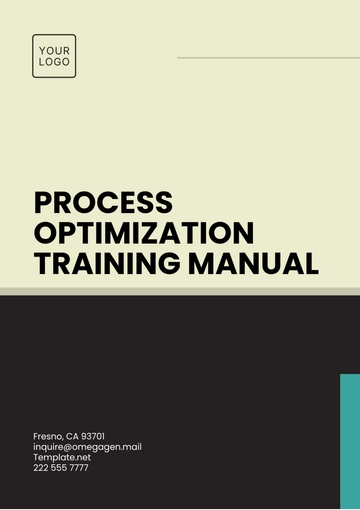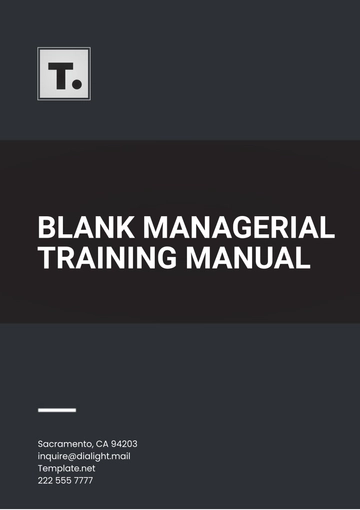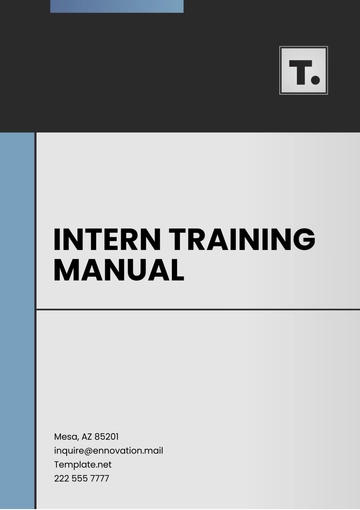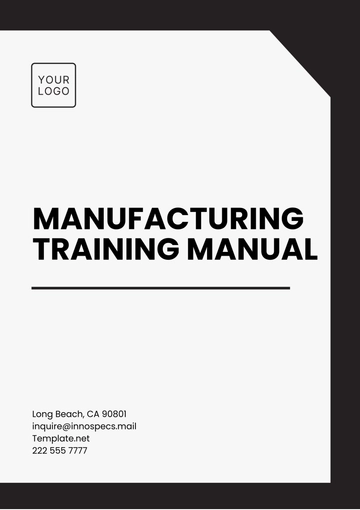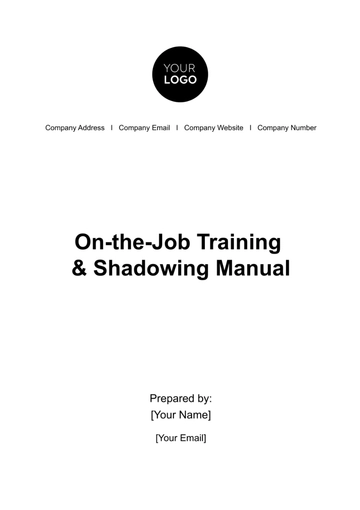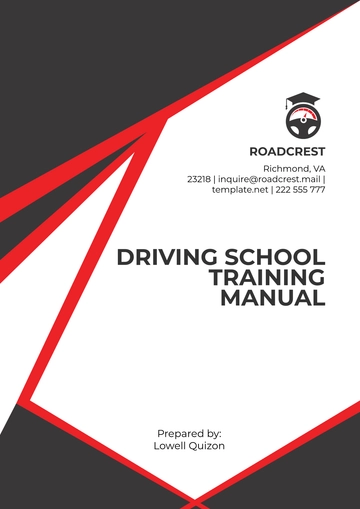Free Manual on Post-Sale Customer Education

A. Introduction
Welcome to the Post-Sale Customer Education Manual. This document articulates the protocols and strategies [Your Company Name] employs to enlighten and empower our customers following their purchase. Recognizing the pivotal role that informed product use has on customer satisfaction and long-term loyalty, this manual is meticulously designed to ensure a seamless transition from purchase to proficient use. All team members must adhere to the guidelines to maintain the integrity of the customer's post-sale experience.
B. Overview of Post-Sale Customer Education Program
At [Your Company Name], the Post-Sale Customer Education Program is a cornerstone of our customer retention strategy. This initiative is not a mere follow-up; it is an ongoing engagement that bridges the gap between customer expectations and product potential. Structured around the key principles of clarity, accessibility, and progression.
This program aims not only to instruct but also to inspire our customers, encouraging the exploration and optimal utilization of our product features. The ensuing sections of this manual detail the structured approach and multi-faceted tactics we employ to realize this vision.
C. Roles and Responsibilities
The successful implementation of our program relies on the concerted efforts of various roles within our organization. Each role is pivotal in orchestrating a cohesive education experience for our customers.
Role | Responsibilities |
|---|---|
Customer Education Manager | Leads the strategic planning and execution of the education program, ensures quality control, and supervises the education team to ensure the delivery of consistent and high-caliber educational services. |
Each role is supported by a suite of tools and resources, guaranteeing that every team member is equipped to provide an exceptional educational experience to our customers. It is the synergy between these roles that underpins the effectiveness of our customer education efforts.
D. Post-Sale Education Process
This process has been crafted through a series of steps designed to ensure that customers derive maximum benefit from our products and services. This comprehensive approach is structured to address varied customer learning styles and preferences, facilitate knowledge retention, and promote the proficient application of acquired skills. Herein is an enhanced breakdown of the process:
Initial Customer Engagement
Immediately following a sale, customers are welcomed into our educational ecosystem. An assessment employing quantitative and qualitative methods is conducted to discern the customer's knowledge base, technical aptitude, and learning preferences. This tailored engagement ensures that the subsequent education plan is bespoke to the customer’s specific needs, fostering a more impactful learning experience.
Educational Resource Distribution
The education team curates a suite of educational resources, ranging from written documentation to multimedia content, aligned with the identified customer profile. Leveraging advanced distribution platforms, we ensure that these resources are readily accessible and presented in an intuitive sequence that respects the customer's time and learning curve.
Follow-up and Feedback
Our educators maintain an ongoing dialogue with customers to support their learning journey. These scheduled interactions are designed to assess and support the customer’s progress and also to solicit feedback on the educational materials and instruction provided. This feedback is a critical component of our continuous improvement model for educational content and delivery methods.
Advanced Customer Education
For customers who exhibit a need or desire to delve deeper into the capabilities of our products or services, we offer advanced educational opportunities. These can be in-depth workshops, one-on-one coaching sessions, or access to specialized online modules. These advanced offerings are developed to cater to the evolving competencies and interests of our customers, ensuring they are well-equipped to exploit the full range of functionalities our products offer.
Each step of this process is underpinned by our commitment to an exceptional customer experience, focusing on building long-term customer competence and confidence in using our products.
E. Educational Materials
The Educational Materials provided embody our dedication to fostering a product of understanding and proficiency. These materials are designed with the dual intent of delivering rich, engaging content and serving as practical, user-friendly references that support the customer’s application of our products in real-world scenarios.
Types of Materials: Our suite of materials spans a broad spectrum of formats to cater to diverse learning preferences:
User Manuals: These documents are the base of our educational content, offering exhaustive, step-by-step instructions on product features and best usage practices. Each manual is a thorough compendium, meticulously structured to guide users from fundamental operations to advanced functionalities, complemented by high-resolution imagery and diagrams for clarity.
How-to Videos: With a premium on production quality, our how-to videos are a cornerstone for customers who benefit from visual learning. These succinct, yet comprehensive videos present a clear narrative, walking the viewer through each step of a process or feature. Their strategic pacing allows viewers to follow along in real-time with their product, encouraging active learning.
Webinars: Our webinars are curated live sessions that deliver cutting-edge information directly from our product experts. These sessions are designed to be interactive, allowing for immediate engagement and personalized responses to customer inquiries. They also serve as a platform for unveiling new features and offering insider tips for optimized product use.
Interactive E-Learning Modules: These modules are at the forefront of modern learning methodologies, offering a dynamic and adaptive learning environment. They are constructed to encourage exploration, with interactive scenarios that simulate real-world product usage, enabling users to learn through experience without risk to actual operations.
Infographics: Recognizing the power of visual representation, our infographics distill complex information into visually striking, memorable graphics. They are strategically utilized to highlight critical workflows, summarize extensive data, and provide at-a-glance insights that can be referred to quickly during the work process.
Customization of Materials: To ensure relevance and impact, our materials undergo a rigorous customization process:
Industry-Specific Customization: We curate content to resonate with the distinct scenarios and vernacular of each industry we serve. This ensures that the material is not only relevant but feels intuitively aligned with the customer's daily language and challenges.
Role-Based Customization: Recognizing the diverse roles our customers hold, we tailor our content to align with specific job functions, focusing on the features and knowledge most pertinent to each role’s responsibilities and impact areas.
Usage-Pattern Customization: Our educational resources are adaptable to reflect the customer’s usage intensity and frequency, ensuring that each user is provided with information that aligns with their interaction with our product, from occasional users to power users.
This customization ensures that every piece of educational content provided is informative and also directly applicable to the customer’s context, thus enhancing their capacity to leverage our products to their full potential.
F. Customer Education Tracking and Reporting
In this endeavor, tracking and reporting play an instrumental role. Our systematic approach to capturing educational engagement and outcomes provides valuable insights into the effectiveness of our educational materials and methodologies.
Education Tracking Systems: We employ sophisticated tracking systems to monitor customer engagement with our educational resources. These systems are designed to record a multitude of metrics, such as:
Completion Rates: We track the completion rates of our educational modules to ensure customers are not just starting but also finishing the provided courses.
Knowledge Checks: Embedded quizzes and assessments help gauge the customer's retention and understanding of the material.
Engagement Analytics: Utilizing advanced analytics, we examine how customers interact with our materials, identifying which resources are most used and valued.
Reporting Mechanisms: Our reporting mechanisms are as follows:
Regular Progress Reports: These reports are generated to provide internal stakeholders with insights into customer education trends, highlighting areas of success and opportunities for improvement.
Customer Feedback Synthesis: We systematically collect and synthesize customer feedback to shape future iterations of educational content and to tailor the learning experience to customer preferences and suggestions.
Educational Impact Analysis: A more in-depth analysis is conducted periodically to correlate educational engagement with customer satisfaction, product utilization, and, ultimately, customer retention rates.
Data-Driven Decisions: The intelligence gathered through our tracking and reporting systems informs the strategic decisions made regarding the evolution of the Customer Education Program. This data-centric approach allows for:
Customization at Scale: We analyze patterns and trends to tailor our education efforts on a larger scale, ensuring that we are meeting the collective needs of our customer base.
Resource Optimization: By understanding which educational tools are most effective, we can allocate resources more efficiently, enhancing or retiring materials based on performance.
Continuous Feedback Loop: Our commitment to a perpetual feedback loop ensures that customer education is an ever-evolving process, with enhancements fueled by real-world user data and feedback.
Through the meticulous tracking and reporting of our education program's performance, [Your Company Name] ensures that our customers are not only knowledgeable about our products but are also receiving the educational support necessary to realize their maximum potential. This process is fundamental to maintaining our position as a leading provider in our field and a testament to our dedication to customer success post-sale.
G. Continuous Education Improvement Protocol
We uphold a philosophy of continual enhancement in our Post-Sale Customer Education Program. Our Continuous Education Improvement Protocol is a structured approach to ensure our educational offerings remain at the forefront of industry standards, delivering impactful learning experiences that evolve with customer needs and technological advancements.
Periodic Program Review Cycles: We implement systematic review cycles every quarter, wherein every aspect of the education program is scrutinized for efficacy and relevance:
Curriculum Updates: Our education team assesses and updates the curriculum to include new product features, industry best practices, and to address any emerging trends that affect our customer base.
Teaching Methodology Enhancements: Leveraging feedback and educational performance data, we refine our teaching methods to improve comprehension and engagement.
Technology Integration: We constantly seek out new technologies that can facilitate more immersive and interactive learning experiences, such as augmented reality (AR) or virtual reality (VR) applications.
Stakeholder Engagement: The process places a strong emphasis on the inclusion of various stakeholders:
Customer Input: We actively solicit and prioritize customer feedback, recognizing that the most valuable insights into educational content come from those it is designed to serve.
Cross-Departmental Collaboration: Regular meetings with R&D, customer service, and marketing departments ensure that the education program benefits from a broad perspective and aligns with overall company objectives.
Expert Consultations: We engage with external educational experts to stay abreast of the latest instructional strategies and learning science findings.
Impact Assessment and Adaptation: To close the loop on our continuous improvement efforts, we assess the real-world impact of our educational programs:
Learning Outcomes Measurement: We rigorously measure the learning outcomes against predefined benchmarks to ensure they meet our high standards of customer enablement.
Business Metrics Correlation: By correlating education program data with key business metrics, we can quantify the impact of customer education on product adoption, customer satisfaction, and retention rates.
Adaptive Content Evolution: Using data-driven insights, our educational materials are dynamically adapted to better serve our customer’s evolving needs.
[Your Company Name] guarantees that our customer education initiatives are never static. We believe that an unwavering commitment to progression in education equates to empowered customers and sustained company success.
H. Conclusion
We have delineated the essential structure and operational facets of [Your Company Name]'s Post-Sale Customer Education Program. The investment in our customers’ education is an unequivocal reflection of the company’s dedication to not just customer satisfaction but customer success. We understand that the post-sale journey is critical to fostering long-term partnerships, and we are committed to providing our customers with the resources necessary to excel.
Through this manual, we trust that our company’s stakeholders will have a clear guide to maintaining the high standard of customer education that is synonymous with our brand.
- 100% Customizable, free editor
- Access 1 Million+ Templates, photo’s & graphics
- Download or share as a template
- Click and replace photos, graphics, text, backgrounds
- Resize, crop, AI write & more
- Access advanced editor
Empower your customers with all the proper and important knowledge by using our Manual on Post-Sale Customer Education Template! Provide all of the comprehensive educational content to help customers make the most of their purchases, fostering a better customer experience. Download our handy and easy-to-use template today at Template.net!
